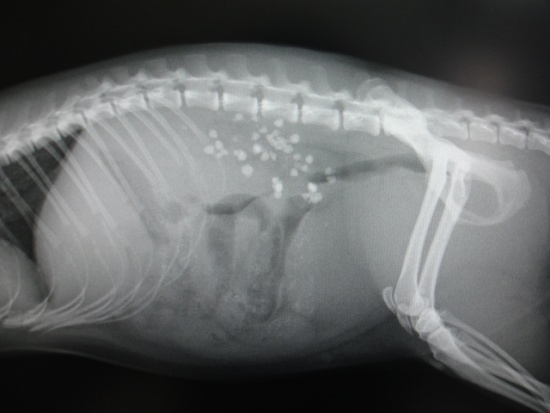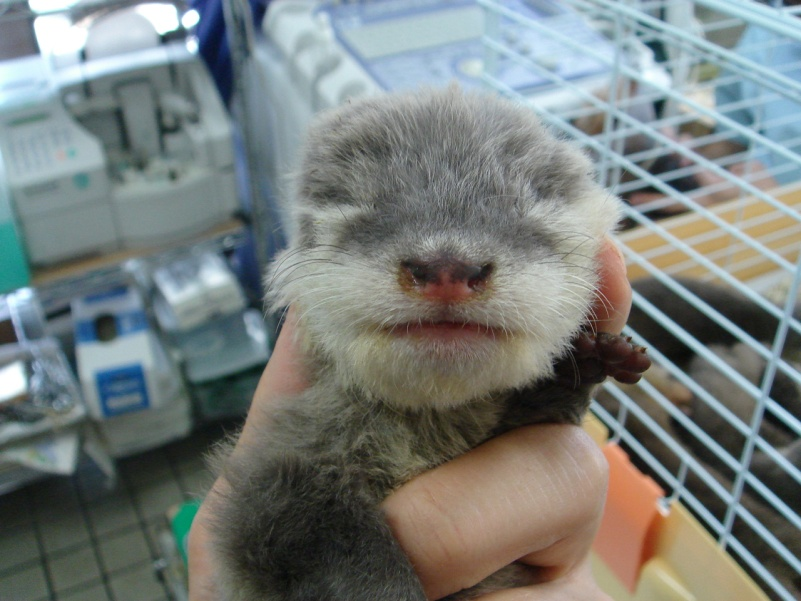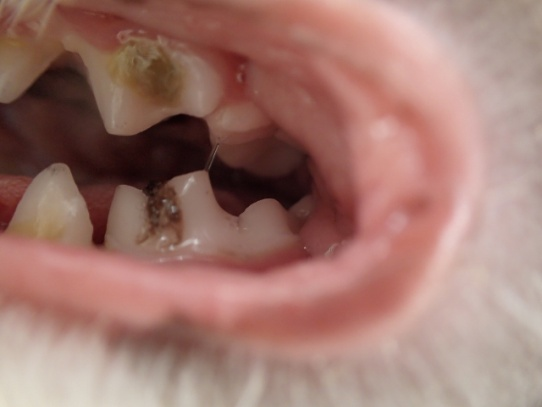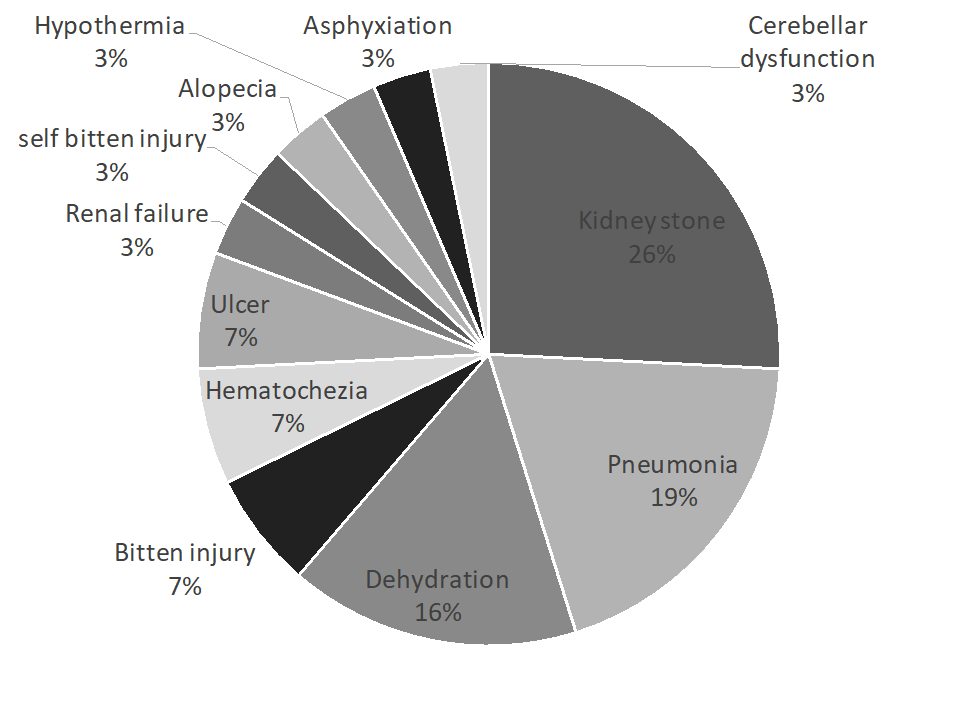IUCN/SSC Otter Specialist Group Bulletin

©IUCN/SCC Otter Specialist Group
Volume 37 Issue 2 (April 2020)
Citation: Okamoto, Y., Maeda, N., Hirabayashi, M. and Ichinohe, N. (2020). The Situation of Pet Otters in Japan – Warning by Vets IUCN Otter Spec. Group Bull. 37 (2): 71 - 79
The Situation of Pet Otters in Japan – Warning by Vets
Yumiko Okamoto1*,Naoki Maeda2, Masakazu Hirabayashi3 and Natsumi Ichinohe4
1Hsinchu Zoo: 279, Kung-Yung Rd, Hsinchu City, Taiwan 300
2Maeda Animal Hospital: 9-12, 2-Chome, Matsushita, Inazawa City, Aichi Prefecture, Japan 4928208
3All Pet Clinic: Aruta House, 2-4-9, Nishi Azabu, Minato-ku, Tokyo, Japan 1060031
4Tokyo University of Agriculture and Technology: 3-5-8 Saiwai-cho, Fuchu-shi, Tokyo, Japan 1838509
*Corresponding Author: e-mail: yumikohaku88@gmail.com
Received 29th June 2019, accepted 22nd October 2019
Abstract: Clinical data for 20 pet otters treated at two animal hospitals in Japan was collected from August 2010 to May 2019. Most otters were in a critical condition or already dead when they were brought to the hospital. All otters were identified as Asian small-clawed otters and kept privately at the owner’s house or otter café. Nine of the otters were considered to have been imported illegally (No.4-8 and No.13). Regarding the diseases suffered, kidney stones were seen most frequently, then pneumonia and the third was dehydration. Most of the otters looked thin due to inadequate nutrition. An inappropriate environment was the most common cause of diseases in pet otters, followed by inadequate nutrition and then stress. Two otters with stress-related illness were kept in the same otter café, where petting by people unknown to them could have caused their condition. Although laws regarding to Asian small-clawed otters in Japan was changed in August 2019 according to the change of CITES rank from II to I, the monitoring on the domestic otter market should be kept until the situation is improved. In conclusion: firstly, owners should be aware of basic husbandry of Asian small-clawed otters before owning one, and secondly, improvement on management system of captive otters, and enforcement of such regulations is a key factor for more effective otter protection in Japan. From the point of view of animal welfare, the current situation of pet otters in Japan has to be improved as soon as possible to prevent more tragic deaths. We hope that this information can contribute to a better management and protection of otters.Keywords: Disease, Management of wildlife, Veterinary, Wildlife law, Welfare
INTRODUCTION
As many articles report, otters are becoming one of the most popular animals in Japan these days (New York Times, 2019). However, too much popularity is causing many serious problems such as the illegal pet trade, poaching or business use for commercial facilities including otter cafés (McMillan, 2018, Kitade & Naruse, 2018). One of the biggest reasons that Japan has become a hot spot of the otter trade must be because of the high retail price of otters: it has reached over 300 times the reported black market price in Thailand (USD 30 in Thailand compared to USD 9,000 per juvenile or more in Japan) (Kitade & Naruse, 2018).
Usually, the Asian small-clawed otter (Aonyx cinereus) is kept as an individual pet or exhibited in otter cafés in Japan. This species was formerly listed on CITES Appendix II before August 2019, and is not protected under the Law for the Conservation of Endangered Species of Wild Fauna and Flora that regulates domestic trade of animals in Japan (McMillan, 2018). In addition to the unregulated trade, there is no domestic registration system or husbandry guidelines for pet otters in Japan, which makes it much easier to keep this species in captivity than in countries with such systems. To change this situation, the Japanese government declared on August 2019 that the Asian small-clawed otter will be designated as an ”International Endangered Species of Wild Fauna and Flora” under the domestic law and domestic otter trade would have been restricted from November 2019 according to the international decision that the CITES Appendix rank of this species was changed from II to Ⅰ.
It must be admitted that otters are very attractive animals, and extremely photogenic. In Japan, whilst buying an otter was easy, it is difficult for people to keep one correctly in private properties because otters need a large space, a semi-aquatic environment and a variety of foods, up to 20% of their body weight per day (Heap et al., 2008). In addition, the faeces have a strong smell, and the animal has sharp teeth and powerful jaw muscles, capable of cracking crustacean shells. The Asian small-clawed otter is also highly social, and requires either others of its species in a stable group, or intensive interaction with its owner. In short, it is completely unsuitable for private ownership in urban environments, and require specialized, and expensive conditions on more rural properties.
However, little information on how to keep pet otters correctly, and on the medical conditions they experience is available in Japan, and the demand for pet otters has kept growing through the influence of social media (New York Times, 2019). To reveal the truth and discourage the inappropriate private keeping of otters, a survey on pet otters treated at animal hospitals in Japan was conducted and is presented in this report.
APPROACH
Clinical data on privately owned otters was collected at two animal hospitals in Nagoya and Tokyo, Japan from August 2010 to May 2019. In addition to basic information about the treated otters (age, sex, body weight and disease), the estimated cause of disease and other features have been recorded. However, age is only based on the owner’s information.
RESULTS AND DISCUSSION
In total, 20 cases of pet otter treatment were recorded and most of the otters were in a critical condition or already dead when they were brought to hospital (Table 1). All otters were identified as Asian small-clawed otters and had been kept privately at the owner’s house or at an otter café.
Many serious diseases were observed, such as kidney stones (Figure 1), dehydration and pneumonia (Figure 2), bite injuries (Figure 3), dental problems (Figure 4) and alopecia (Figure 5). In decreasing order of frequency, kidney stones were observed most often, then pneumonia, and third was dehydration (Figure 6). Most otters looked skinny and one 4-month old otter (No. 14) was especially emaciated, weighted only 450g. Based on studbook database, this is almost the same body weight as a 50-day old otter. In addition to that, there was no food left in the stomachs of two dead otters (No. 2 and 3), and the gallbladder of No. 3 was even enlarged due to chronic hunger. The average age at death of these otters was only 1 year and 7 months, which is much shorter than the normal 10-15 year life span in captivity (Perdue et al., 2013).




In terms of the causes of these diseases, an inappropriate captive environment, such as low temperatures, no access to water for exercise, or incompatible breeding partner were the most frequent causes (58%). Secondly, many diseases such as kidney stones and hematochezia (blood in stool) occurred due to inadequate nutrition. Especially, from the 20 animals, 5 have been cubs under 3 months of age. It is questionable if these cubs got an adequate milk replacement because they still would have needed normally their lactating mothers. Weaning time in this species is with around 80 days / 3 months. But also in older otters, some owners even simply did not give large enough amounts of food to their otters. Sometimes on purpose, to make otters have less strong-smelled faeces. Thirdly, symptoms of mental problems were also observed, for example; the self-mutilation injury and alopecia. Two otters with these stress-related symptoms were all kept in the same otter café and it is believed by the veterinarian that petting by unknown people for long hours caused huge stress for the animals.
The Asian small-clawed otter normally lives 10-15 years and up to 20 years in captivity (Perdue et al., 2013). However, the average age of otters at death observed in this study was only 1 year and 7 months, which is very short- they have barely achieved maturity. To determine exactly how inappropriate feeding affected the otters in this study is difficult, because it is known that Asian small-clawed otters often develop kidney stones (urolithiasis/nephrolithiasis) in captivity even under good husbandry conditions and even in young age (Petrini et al., 1999, Bochmann et al., 2017). However, while wild otters forage for a wide variety of food items including fish, crustaceans, crabs, snails, mollusks, frogs or small birds (Heap et al., 2008), these pet otters were normally only fed on cat food or human food with high salt content. It is recommended to feed otters in captivity a diet similar (around 60%) to their wild one and avoid foods containing red meat proteins and salt in high concentration as in cat food, dog biscuits and kibbles (Jason Palmer, pers. comm). Hence, it is estimated that the wrong feeding have caused serious nutritional problems in these otters.
Otters and the Law in Japan
Law enforcement is very important as an effective tool to protect wildlife. Japanese laws regarding to Asian small-clawed otters are listed here.
Import; in Japan, the international wildlife trade is normally regulated by the Foreign Exchange and Foreign Trade Act and Customs Law. Under these laws, people currently cannot import the Asian small-clawed otters from the wild except with academic purpose or individuals bred in captivity or got properly before August 2019. Among the 20 cases observed in this study, nine otters were thought to have been imported illegally because their owners faced criminally charges later (No. 4-8 and No. 13).
Domestic trade; As mentioned above, domestic trade of CITES Appendix I species is tightly controlled under the Law for the Conservation of Endangered Species of Wild Fauna and Flora. Because of the CITES rank upgrade from II to I of the Asian small-clawed otter and this species was designated as an ”International Endangered Species of Wild Fauna and Flora” under this domestic law on August 2019. The domestic otter trade would have been restricted and people have to obtain the registration form when trading from November 2019. However, the trade is still possible under this situation; 1) individuals born under parents with registration 2) individuals obtained in the domestic market before the law regulation changes 3) individuals imported under the permission of Customs Law.
Private keeping; all pet animals including otters should be kept well with a suitable environment under the Act on Welfare and Management of Animals. Also, people have to register the pet otter on CITES I under the Law for the Conservation of Endangered Species of Wild Fauna and Flora from November 2019. Although it seems to be the best solution to control the pet otter market, however, there is another risk that all otters in Japan including poached individuals will be registered as proper imported or captive bred individuals.
For the better captive management and prevention of tragedies occurring with pet otters in this country, the monitoring should be kept even after the laws on otters in Japan were improved in 2019.
CONCLUSIONS
While the critical threat to the illegal otter, and the increasing commercial use of otters in cafés in Japan have been becoming clear in recent years, the actual welfare state of the owned otters was almost unknown due to the lack of a registration or monitoring system by the government. In this paper, we reveal the first sight of the inappropriate management and poor welfare state of privately kept pet otters in Japan.
RECOMMENDATIONS
Firstly, information about basic husbandry of Asian small-clawed otters should be prepared and disseminated to would-be owners so that they can have easily access to these information before they buy a pet otter. Probably husbandry guidelines, which exist already in other countries, could be translated and set on otter pages in the internet so that they would be available for everyone who is interested. However, it should be recommended sharply, otters not to use as pets in normal households or as petting animals. The survey showed that many otters are, through ignorance of their needs, kept in poor environments with inadequate nutrition, causing the tragic deaths of many animals. The information collected in just two animal hospitals is the tip of the iceberg and further investigation is necessary. Especially the findings of very young animals (1-2 months old) show, that there is absolutely no knowledge about nutrition, because juveniles in this age are still dependent on their mothers. They will be nursed at least until 80 days. So as recently as an age of nearly 3 month they start to eat solid food.
Secondly, the enforcement of management system on captive otters is a key factor for the more effective protection of otters in Japan. Although registration on captive otters will be started from November 2019 according to the changes of domestic laws, however, there is another risk that all otters in Japan including poached individuals can be registered as proper imported or captive bred individuals. To prevent this situation, the application for registration should be strictly examined by the Japanese government. Also, inspection of the captive environment and husbandry regime for a proposed pet otter could prevent the casual acquisition of an animal with complex needs, and lead to a decline in popularity of otter keeping and the demand for them as pets. Regarding to the international otter trade, it is still concerned that otters could be imported under the CITES regulation exception that; Article VII of CITES states that species listed in Appendix I that are bred in captivity for commercial purposes are treated as Appendix II. In addition to otters, many other exotic species are currently kept privately as pets (McMillan, 2018), so the whole legal system regarding to wildlife keeping should therefore be reconsidered and the monitoring should be kept on the international and domestic otter trade until the situation is completely improved.
From the point of view of animal welfare, the current situation of pet otters has to be improved as soon as possible to prevent more tragic deaths. We hope that the information we present here can contribute for better management and protection of otters.
Acknowledgements: We wish to thank all the people who cooperated with us, and Kaori Fujita and Sakura who gave us professional veterinary advices. We also would like to show our appreciation to Jan Reed-Smith, Meredith Knott and Sarah Duncan who shared otter information for this study.
REFERENCES
Bochmann, M., Steinlechner, S., Hesse, A., Dietz, H.H., Weber, H. (2017). Urolithiasis in free-ranging and captive otters (Lutra lutra and Aonyx cinerea) in Europe. J. Zoo. Wildl. Med. 48, 725-731.
Heap, C.J, Wright, L., Andrews L. (2008). Summary of Husbandry Guidelines for Asian Small-clawed Otters in Captivity. IUCN/SSC Otter Specialist Group, Otters in Captivity Task Force.
Kitade, T., Naruse, Y. (2018). OTTER ALERT, A rapid assessment of illegal trade and booming demand in Japan. TRAFFIC, Japan.
McMillan, E.S. (2018). TOO CUTE! THE RISE OF OTTER CAFÉS IN JAPAN. IOSF. 4. pp. 23-28.
New York Times. (2019). These Otters Are Popular Pets in Asia. That May Be Their Undoing. (https://www.nytimes.com/2019/04/22/science/asia-otters-pets-japan.html) Downloaded on June 18th, 2019.
Perdue, B.M, Snyder, R.J., Maple, T.L. (2013). Cognitive Research in Asian Small-Clawed Otters. Int. j. comp. psychol. 26. pp. 105-113.
Petrini, K.R, Lulich, J.P, Treschel, L., Nachreiner, R.F. (1999). Evaluation of urinary and serum metabolites in Asian small-clawed otters (Aonyx cinerea) with calcium oxalate urolithiasis. J. Zoo. Wildl. Med. 30, 54-63.
La Situation des Loutres, comme Animal de Compagnie, au Japon – Une Mise Een Garde des Vétérinaires
Des données cliniques concernant 20 loutres, animaux de compagnie, soignées dans deux hôpitaux vétérinaires au Japon ont été recueillies d'août 2010 et mai 2019. La plupart des loutres étaient dans un état critique ou étaient déjà mortes lorsqu'elles ont été transférées à l'hôpital. Toutes les loutres ont été identifiées comme étant des loutres cendrées gardées par un propriétaire privé ou dans un « Café à loutres ». Neuf de ces loutres ont été considérées comme importées illégalement (n ° 4 à 8 et n ° 13). En ce qui concerne les maladies dont elles souffrent : les calculs rénaux sont les plus fréquents, vient ensuite la pneumonie et en troisième lieu la déshydratation. La plupart des loutres semblaient maigres de par une nutrition inadaptée. La cause la plus fréquente des maladies chez les loutres de compagnie était liée à un environnement inapproprié, suivi d'une nutrition inadaptée et ensuite le stress. Deux loutres souffrant de maladie liée au stress ont été placées dans le même «Café à loutres», où des caresses de personnes inconnues auraient pu être la cause de leur stress. Bien que les lois concernant les loutres asiatiques au Japon aient été modifiées en août 2019 en fonction du passage de l’annexe II à l’annexe I de la CITES, la surveillance du commerce de la loutre comme animal de compagnie sur le marché intérieur devrait être maintenue jusqu’à ce que la situation se soit améliorée. En conclusion : premièrement, les propriétaires doivent être informés des règles de base de l’élevage des loutres cendrées avant d’en acquérir une, et deuxièmement, l’amélioration du système de gestion des loutres captives et un renforcement de la régulation sont un facteur clé pour une protection plus efficace des loutres au Japon. Au point de vue du bien-être des animaux, la situation actuelle des loutres au Japon, comme animal de compagnie, doit être améliorée dès que possible pour éviter des mortalités plus tragiques. Nous espérons que ces informations pourront contribuer à une meilleure gestion et protection des loutres.
Revenez au dessus
Resumen: La Situación de las Nutrias como Mascotas en Japón – Una Advertencia de los Veterinarios
Colectamos datos clínicos de 20 nutrias-mascotas en dos hospitales animales en Japón, de Agosto 2010 a Mayo 2019. La mayoría de las nutrias estaban en condición crítica o ya muertas cuando fueron ingresadas al hospital. Todas las nutrias fueron identificadas como Nutrias Asiáticas de Uñas Pequeñas, y mantenidas en cautiverio en forma privada en una casa o en un “café de nutrias”. Nueve de las nutrias se supone que fueron importadas ilegalmente (No. 4-8 y No. 13). En cuanto a las enfermedades, lo más frecuente que vimos fueron piedras en los riñones, luego neumonía, y la tercera deshidratación. La mayoría de las nutrias estaban muy flacas, debido a nutrición inadecuada. La causa más común de las enfermedades en nutrias-mascotas fue su ambiente inadecuado, seguido por nutrición inadecuada y luego stress. Dos nutrias con enfermedad relacionada con el stress estaban en el mismo café de nutrias, y las caricias por gente desconocida podría haber causado su condición. Aunque en Agosto de 2019 fue modificada la legislación relacionada con las nutrias asiáticas de uñas pequeñas (pasaron del Apéndice II de CITES al I), el monitoreo del mercado de nutrias domésticas debería ser mantenido hasta que mejore la situación. En conclusión: en primer lugar, los dueños deberían tener conocimientos en cuidados básicos de nutrias asiáticas de uñas pequeñas antes de tener una, y en segundo lugar, el mejoramiento en el sistema de manejo de nutrias en cautiverio, y la fiscalización de esas regulaciones, es un actor clave para la protección más efectiva de las nutrias en Japón. Desde el punto de vista del bienestar animal, la actual situación de las nutrias-mascotas en Japón tiene que mejorar lo más pronto posible para prevenir más muertes trágicas. Esperamos que esta información pueda contribuir a un mejor manejo y protección de las nutrias.
Vuelva a la tapa


